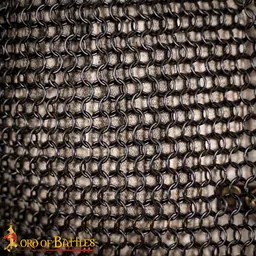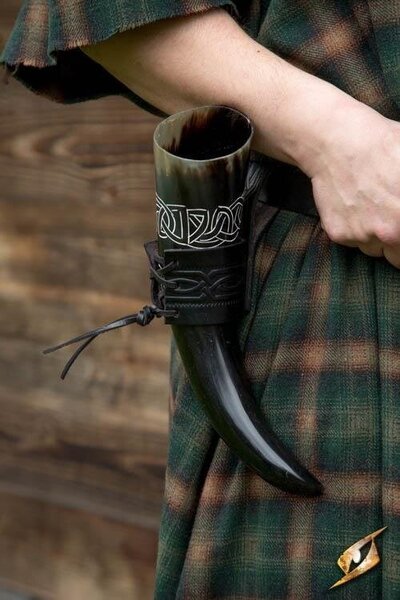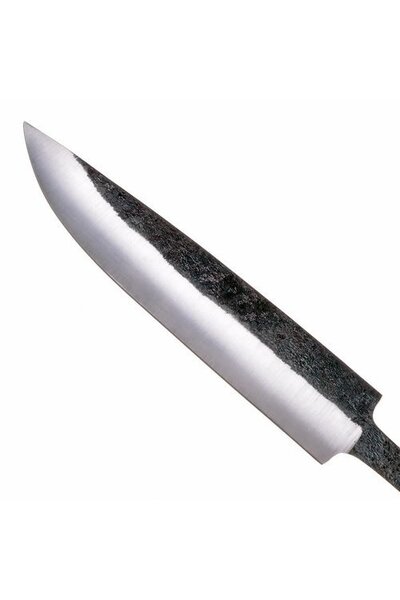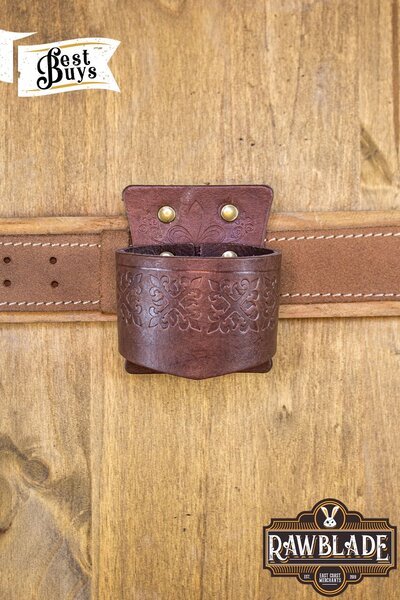Product description
Hauberks like this were worn by both the 9th century Vikings and the 13th century crusaders. This hauberk is made of unriveted round rings. The rings are made of mild steel and are woven together in a 4:1 construction. This means that 1 ring is attached to 4 other rings.
Chainmail shirts like these were worn from the 11th century onwards. This type of long chainmail shirt, also called a hauberk, features a split. The split provides extra comfort while riding a horse. 11th-12th century depictions show knights almost exclusively with a split in their hauberks. From the 12th to the 14th century, hauberks were worn both with and without splits.
Leather laces can be used to easily attach chainmail coifs and armor parts to the chainmail shirt. The sleeves can also be tightened around the arm and elbow with leather laces, resulting in less play and more freedom of movement.
Details:
Steel: mild steel, unriveted round rings
Finish: galvanized
Ring thickness: 1.6 mm
Inner diameter: 10mm
Construction: 4:1
Size: M to XL
Based on a historical original
Shipment weight (g): 20000 *
This item is produced in limited quantities only. This means that every piece is unique. Sizes & finish may vary lightly from piece to piece.
Maintenance & care
Remove rust from your chainmail by rubbing the rings together (just like when hand-washing clothes, but without water). The rings will grind together and the rust will come off.
Which size hauberk should I choose?
When you wear a gambeson, your breast circumference is around 15 cm larger.
Attaching armour & chainmail
To attach your armour or chainmail securely, you can attach leather laces to your gambeson and fasten these to your armour / chainmail. The armour thus remains in position during a fight.
When packaging this item, we exclusively use 100% recycled plastic and recycled paper/cardboard from FSC certified forests. We reuse a large part of the material directly without the intervention of a recycling process.
Recycle the material by separating your waste:
1. Cardboard: separate or reuse your paper.
2. Plastic cushions, clothing bags and plastic tape: separate or reuse your plastic. If possible, pierce the cushions with a volume reduction needle.
3. Paper packaging for jewelry and small items: these have a plastic inner layer. Remove these, then separate your paper and plastic.
Read here about how we are committed to sustainability.
























